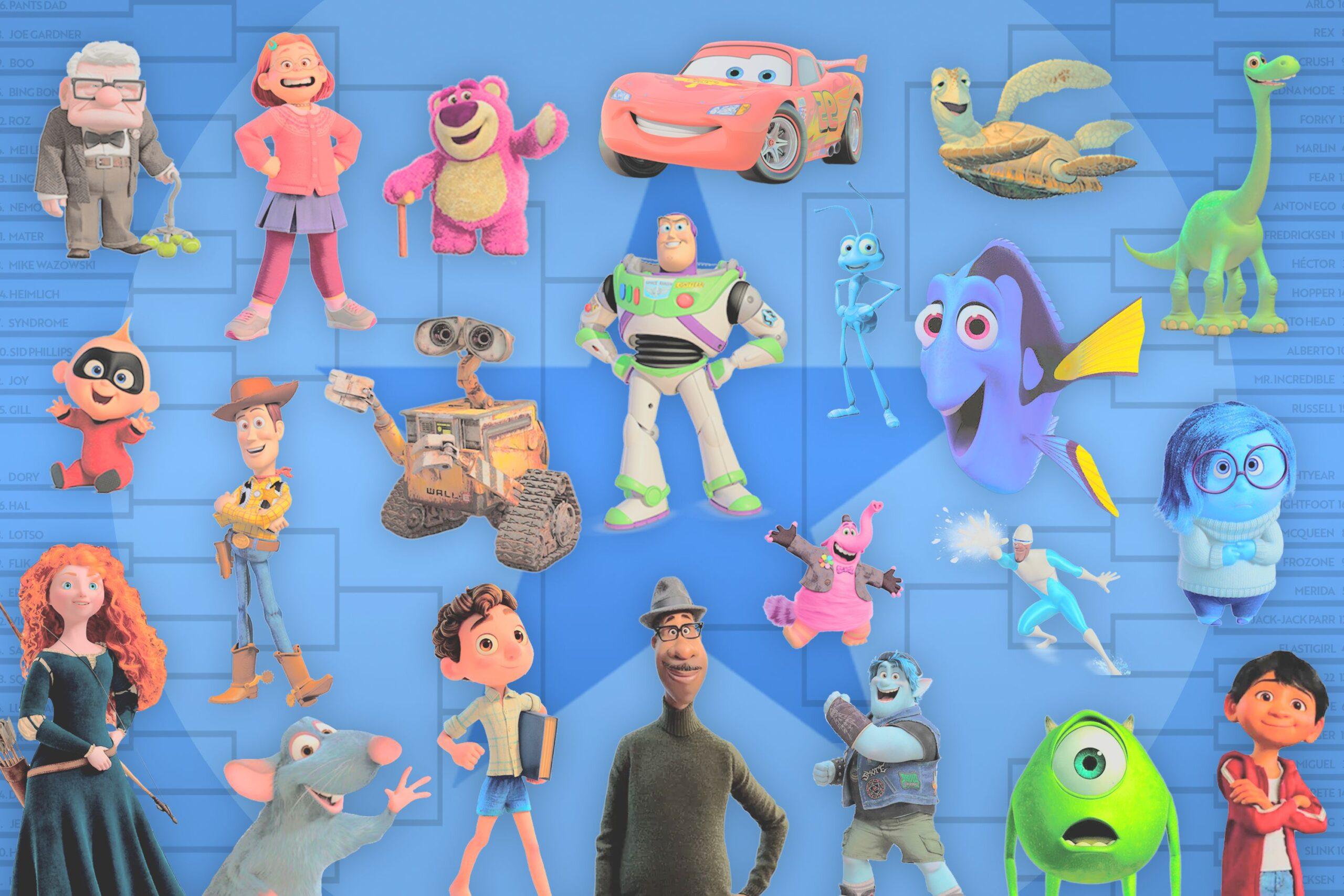Grunge. Wu-Tang Clan. Radiohead. “Wonderwall.” The music of the ’90s was as exciting as it was diverse. But what does it say about the era—and why does it still matter? 60 Songs That Explain the ’90s is back for 30 more episodes to try to answer those questions. Join Ringer music writer and ’90s survivor Rob Harvilla as he treks through the soundtrack of his youth, one song (and embarrassing anecdote) at a time. Follow and listen for free exclusively on Spotify. In Episode 67 of 60 Songs That Explain the ’90s—yep, you read that right—we’re breaking down Hole, Courtney Love, and “Doll Parts.”
OK. Let’s narrow this down. Let’s designate a primary source. Let’s designate the book Courtney Love: The Real Story, from 1997, whose author now goes by the name Billy Martin. It’s not quite an authorized biography, but Courtney cooperated on some level. All right. Here we go. How complicated can this be? Love Michelle Harrison was born in 1964, in San Francisco. Her mother, Linda, was an heir to the Bausch optical fortune and later became a pretty famous psychotherapist; her father, Hank, claimed at least to be an early manager for San Francisco rock band the Warlocks, who later became the Grateful Dead. Hank allegedly gives his 4-year-old daughter a hit of LSD; unsurprisingly, in 1970, Hank and Linda divorce, Linda gets full custody, and changes 6-year-old Love’s name to Courtney.
Courtney bounces amidst multiple stepparents and extended relatives. Young Courtney is housed in various correctional facilities, and when she gets a little older, she works, as a dancer, in various strip clubs. Young Courtney lives in Eugene, Oregon. She lives in Portland. She lives in New Zealand. She lives in Japan. Ireland. London. Taiwan. L.A. San Francisco again. Alaska. Minneapolis. This isn’t necessarily in chronological order, but it’s close enough. She’s up for the role of Nancy Spungen in punk filmmaker Alex Cox’s 1986 cult classic Sid & Nancy, she threatens to move to Guam if she doesn’t get the part of Nancy, she doesn’t get the part, she goes and lives in Guam.
Courtney did take a smaller part in Sid & Nancy; for a while she lived in Spain while shooting another Alex Cox movie, a 1987 spaghetti Western called Straight to Hell costarring Joe Strummer from the Clash and a bunch of other famous people who’d probably rather not talk about it, so maybe don’t ask them.
Concurrently, with these affairs, young Courtney pursues rock stardom. Around 1985, she’s in a L.A. band called Sugar Babydoll with bassist Jennifer Finch, who’d go on to form L7, and Kat Bjelland, who’d go on to form Babes in Toyland. Babes in Toyland may or may not have hired and then quickly fired Courtney Love once or twice. L7 and Babes in Toyland would of course both go on to make some great records despite being lumped into an early-’90s all-female rock-band subgenre called Foxcore. I refuse to believe that Foxcore is real, or that anyone ever said the word Foxcore out loud, even sarcastically, in a social environment, to a woman, anywhere, ever, that is the dumbest genre name I’ve ever heard in my life and I consider myself somewhat of an expert in these matters. Let’s wash the genre name Foxcore out of our mouths with some tunes, shall we? I mentioned L7—you wanna hear “Pretend We’re Dead,” don’t you? Of course you do. L7 made some great records, one of which was called Hungry for Stink, which is a very funny album title, but yeah their greatest song is “Pretend We’re Dead,” and there’s no shame in you thinking that, or them knowing it.
Babes in Toyland, same deal, great records, I was listening to the song “Sweet ‘69” in my house recently and I kept bracing for my kids to make me explain the title of this song, but they didn’t ask, because they don’t give a shit. Nobody around here cares what I’m doing.
Kat Bjelland stole much of her look and sound and vibe from Courtney Love, according to Courtney Love, Kat would go on to have a great deal of discouraging words for Courtney as well, they did not part under amicable circumstances, I would stay out of it if I were you. Actually, how about a blanket Stay Out of It for everything and everybody discussed from this point forward, and also everything I said earlier. Courtney Love feuds with everybody, Courtney Love talks shit about everybody, everybody talks shit about Courtney Love, some of the ugliest shit written in ostensibly respectable journalistic publications by anybody about anybody was written by various people about Courtney Love. Meanwhile, Courtney Love’s out here saying shit like, “Madonna’s interest in me was kind of like Dracula’s interest in his latest victim.” Just burned bridges scorched from both ends and stretching to the horizon. Good lord.
In 1989, in Los Angeles, Courtney Love places an ad in the paper that reads, “I want to start a band. My influences are Big Black, Sonic Youth, and Fleetwood Mac.” A guitar player named Eric Erlandson, who has the patience of Job and the physical form of, basically, Tom Petty, answers and stays in Courtney Love’s good graces—and she in his—for possibly longer than anybody else, ever. They form Hole. It’s a literary reference. Jill Emery on bass guitar. Caroline Rue on drums. For purposes of decorum I’d be inclined to avoid saying the names of their early singles, but I wouldn’t know where to stop, and anyway what’s the point. I didn’t name these songs, dude. Their first single is called “Retard Girl.” Their second single is called “Dicknail.” Their third single doubles as the leadoff track on their first full album, Pretty on the Inside, released in September 1991. It’s called “Teenage Whore.”
I’m not hearing a whole lot of Fleetwood Mac here, quite frankly. There is a great SPIN magazine oral history of Live Through This, written by Jessica Hopper, in which Courtney says, “Our first record wasn’t supposed to be melodic. It was supposed to be a really raw expression. It wasn’t designed to sell any records. It was designed to be cool, really. And I don’t mean that in a super contrived way, but sort of contrived. We had a skeletal band, not very skilled. The next record was going to be more commercial.” End quote. But in the meantime, you go to war with the army you have.
Pretty on the Inside was coproduced by Kim Gordon, of Sonic Youth of course, and Don Fleming, of the sludgy New York City band Gumball. This record sounds more like the Melvins than any record Nirvana ever made, if that means anything to you, though that might not even mean anything to Courtney. She has said way meaner things about this record than “It’s not very commercial.” In fact, here we have Courtney Love, saying meaner things about this record.
This band is about to get signed to a major label, to Geffen Records, for a million bucks. There were extenuating circumstances, but still. The early ’90s were wild, dude.
The best song on this record is called “Good Sister - Bad Sister,” Courtney sings, “I’ll be the biggest dick that you ever had.” It’s a very specific type of good time. I didn’t play that one for my kids. What extenuating circumstances led to these people getting signed to a major label for a million dollars, you ask? Well. No. 1: A week after Pretty on the Inside, in September 1991, Nirvana’s Nevermind came out, and suddenly, no matter who you were, if you were in a rock band and you screamed the word ugly six times in a row over super-gnarly guitars, a major-label deal just magically appeared, just, whoop, and you’re signing a contract. Where’d the pen come from? It was a wild time, dude. It was the year that broke punk.
That, actually, might be the only truly relevant extenuating circumstance that explains the quantum leap, in every respect, from Pretty on the Inside to Hole’s second album, Live Through This: the very existence of Nevermind. The music industry’s sudden insatiable bloodlust, in Nirvana’s wake, for rock bands, alternative bands, sludgy bands, grunge-y bands, punk bands of any sort. A feeding frenzy of gargantuan proportions. Milk it, as the saying goes. Teenage angst is paying off well. A cavalcade of radio-friendly unit-shifters. The fact that Courtney Love started dating Kurt Cobain, and married him, and was eight months pregnant when Hole signed, in 1992, with Geffen Records, which was Nirvana’s label—it is naive to think that none of that mattered at all. But Hole, simply by virtue of being a rock band that existed in 1991, was guaranteed a serious upgrade, in prominence if not in quality, by 1994, even if Courtney Love didn’t know anybody. Thankfully, Courtney Love knew everybody, even if many of those people hated her and vice versa, and this time she knew how to make a record that was both cool and listenable.
To hear the full episode click here, and be sure to follow on Spotify and check back every Wednesday for new episodes on the most important songs of the decade. This excerpt has been lightly edited for clarity and length.

